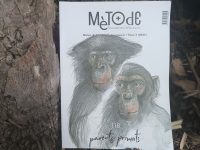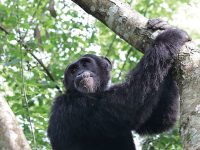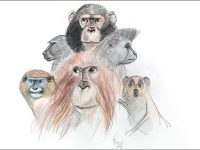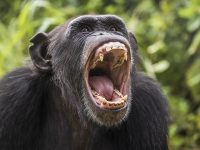Interview with Tomàs Marquès Bonet
«Every species that dies out is a lost opportunity to learn more about ourselves»
Evolutionary biologist

Tomàs Marquès Bonet (Barcelona, 1975) is clearly a determined man. Despite his busy schedule over the last few months, he responds promptly to our emails and sets up the online interview at noon, before leaving for Singapore. Tomàs Marquès Bonet is a biologist and head of the Comparative Genomics Group at the Institute of Evolutionary Biology, a joint research centre of the Spanish National Research Council (CSIC) and the Pompeu Fabra University. He is also a researcher at ICREA (Catalan Institution for Research and Advanced Studies) and Professor of Genetics at Pompeu Fabra University. After obtaining his doctorate, he spent a research period in Seattle (USA), at the University of Washington, in the laboratory of Evan Eichler, which focuses on the study of evolution and pathologies through the human genome. On his return in 2010, with a Ramón y Cajal contract, he set up his own laboratory, mainly dedicated to analysing and comparing primate genomes, but also those of other mammals such as canids, in order to try to understand the human genome better.
Recently, he led a study with other international research centres that analysed the genomes of 809 individuals from 233 primate species, almost half of all species currently recognised as such. The study, published this year in a series of papers in a special issue of Science, explores this new knowledge of primate genomes and how it is helping us to understand not only their evolution and adaptation, but also mutations that may be important in disease in other primates: humans.
Tell me about the implications of this major expansion of the primate genome catalogue.
There are many implications, at many different levels, and that is why Science has published a special issue in which each paper tries to address unanswered questions in different areas of biology. One of the most powerful contributions is that it shows how much primate genomes can tell us about our evolution. In other words, they give us an idea of where a primate genome is more or less likely to change, and as a result we now have a better understanding of the changes that occur in the human genome. So it can actually help us understand ourselves. And then the other obvious aspect is that now that we have these genomes, we know a lot more about these primates. Before this study, we did not have the DNA of more than 200 primate species. And now we do.
How many did we have?
About twenty. So we jumped from about twenty to approximately two hundred. And of course that jump gives us a lot of information about what has happened in different branches of primates.

Why might a better understanding of the genome of non-human primates help us to understand our own human genome?
As an evolutionary biologist, one of the key issues in my field is to understand what makes us human at the molecular level. But in order to know how to define the changes, the mutations, in the human genome, we need a number of other non-human branches against which to compare it. Ultimately, it is a matter of looking at this one thing that is human and looking at things that are not. Then you see what mutations they have in common and what mutations are different, and you end up defining the basis of each lineage. Up until now, there has been quite a catalogue of mutations that we thought were specific to humans, but now that we have the genomes of so many primates, we have almost halved the number of mutations and genes that carry specific human mutations. It is a significant qualitative leap forward because it will now be possible to do a series of experiments in much smaller numbers to try to learn what makes us human.
The point is not to look at what we have in common, but at what makes us different. Is that right?
Of course. And the more primates we sequence, the more we reduce what makes us specifically human. Everything else will be things we share with other primates, because we are still primates. But at the end of the day, we are particularly interested in the changes that make the human lineage unique.
So the aim is to add to the catalogue of the primate genome?
Yes, it is. In fact, we have already added to it, because what we published this year, as you can imagine, we finished analysing months, even years ago. But the publication system is slow. In the meantime, of course, we have continued to increase the number of individuals sequenced.
Your team has stated that almost 60% of the species analysed in this study are endangered. Can these studies contribute to their conservation?
Genetics applied to conservation today cannot save species, but it is a good diagnostic tool for some of them. And I stress «some of them» because what we see is that at a general level, across all primates, there is a difference in the importance of genetics for their conservation. For some species, genetics adds nothing new; for others, we see markers in their genome that indicate aspects such as inbreeding, which are an indication that the population is in some way threatened. So basically what we are saying is: «If, in addition to ecological indicators, the parameters of classical primatology, camera traps and so on, genetics are taken into account, this will help us to prioritise species that need more urgent attention».
And do the new data [from primate genomes] affect the taxonomy of these species?
Yes, certainly. A recurring theme in biology is how we define species. I mean, clearly we need the term species – as humans we like to classify everything – but why include a particular species here and not there? This is where the doubts begin. Until now, there no strong genetic component – let alone whole genomes – was used in primate taxonomy. It was based on other equally valid characters: morphology, ethology, behaviour, geographical distribution… But now that we have whole genomes, we can find all sorts of things: cases that were classified as different species, but genetically we see them as the same, and vice versa, cases that were classified as the same species and we now see a very clear subdivision. This means that taxonomists have another tool, another variable, with which to rethink the organisation of primate taxonomy.
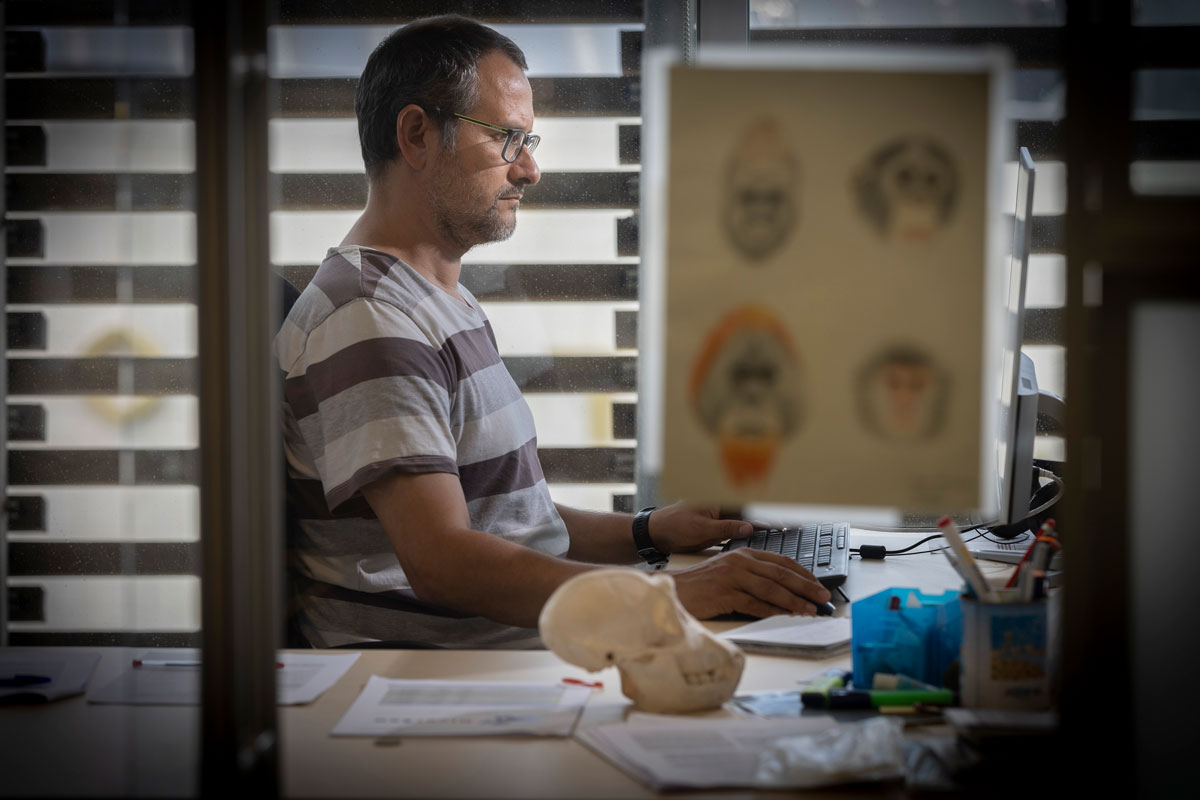
And in human health, we have this data to help us better understand our diseases. But in some complex pathologies, such as cancer, which has many types and subtypes with many mutations, is it not like looking for a needle in a haystack?
This is the problem for people working in clinical genetics. When you sequence a disease, especially a complex one, you find tens of thousands of new mutations that are present in one tumour tissue but not in others. The problem is to know which of these mutations are the cause of the disease and which are its consequence. This is like looking for a needle in a haystack, and we do not have many tools to help us with this task. This is where the primates come in. If you use the genetic variability of primates, you can look and say: «Are these mutations that I found in a patient or in a diseased tissue also present in primates?» If the answer is no, it tells us that a primate genome does not naturally tolerate them and therefore they are likely to cause cells to malfunction, to be dysregulated and to cause disease. Conversely, if you have a mutation that is present in a hundred primate species and five hundred individuals, that is reason enough to think that the mutation is probably benign. So the step forward here is: we are not curing, but we can do a lot to help reduce the spectrum and the number of mutations that we think are relevant to learn more about disease.
«The more primates we sequence, the more we reduce what makes us specifically human»
Is there a link between projects like this and others like Zoonomia, the international consortium that has sequenced the complete genomes of 240 mammal species?
Absolutely. In fact, we are part of it. The message is the same: studying animals and non-human primates gives us more information about ourselves. It is the same, but there are two fundamental differences. Zoonomia decided to sequence all mammals, not just primates, but dogs, armadillos, everything. And they analysed one individual per species. So you «only» have one individual per species, but you have many species. Or the approach – and we started more or less at the same time – was different. We said: «We will only do primates, but we will analyse many individuals of each species». Because we are more interested in the overall variability of primates than in comparing one species with another. But we all end up in the same place, which is to learn about the human genome and how it works. And that is why I like this umbrella field that encompasses everything. Because in the end the philosophy is the same: to learn from animals to learn more about ourselves. And that, even for people who could care less about issues like extinction or climate change, is an argument – a selfish one – for not letting them go extinct. Because every species that dies out is a lost opportunity to learn more about ourselves.
You said that we have learned to read the genome, but we still do not know exactly how to interpret it.
Exactly. Reading the genome, that is, producing the DNA sequence in the cells of an animal, is quite trivial and even relatively cheap. The problem is what we were talking about earlier: I can sequence a patient and find some mutations, but we are still not good at predicting what each change means in a cell. So our work helps people in the field to better understand, among many other parameters, whether these changes will be tolerated by the genome or not. Being able to say «this is likely to give you a disease» or «this is not likely to give you a disease» is a big step.
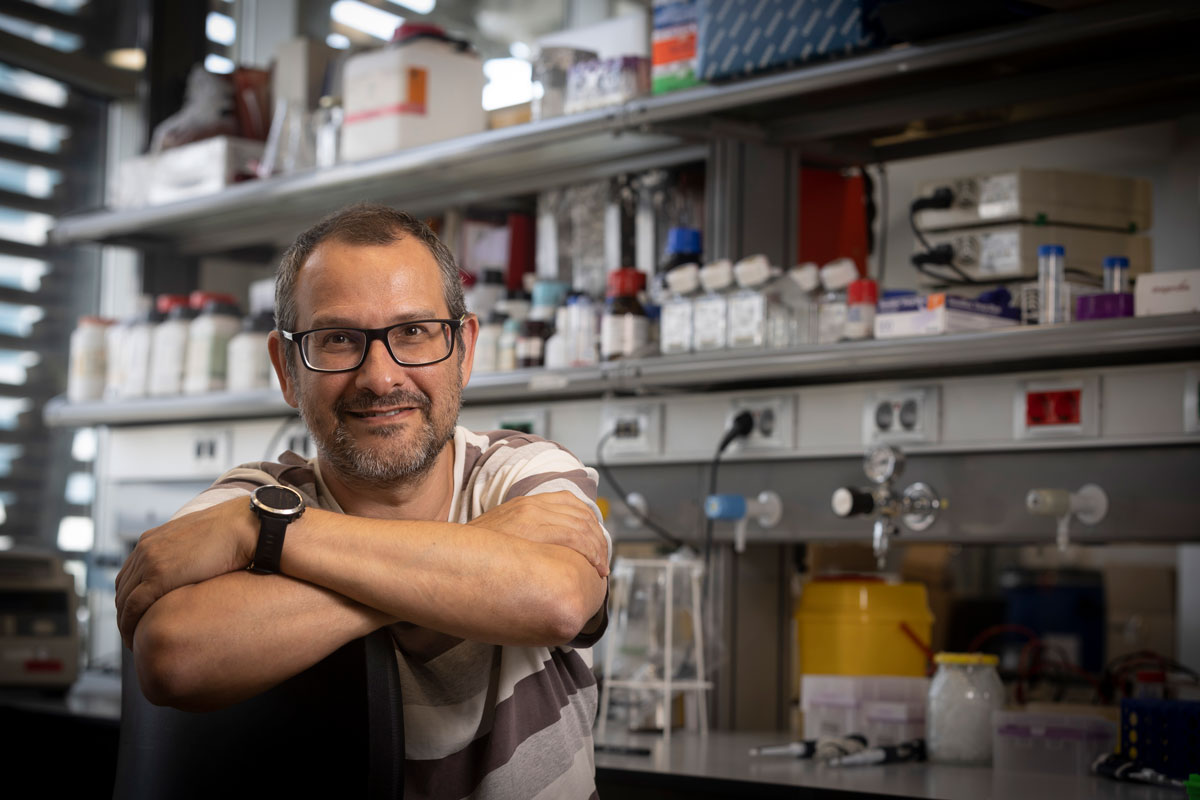
Why is it so difficult to interpret the genome?
Because we do not know enough. The genome is huge: the human genome contains about 3 billion base pairs, as does every primate genome. We know how some aspects work, but we do not know enough about so many others. That is why we still need to do projects like this, which will gradually give us more information about how life works.
What role has technology played in collecting and interpreting data in recent decades?
In the last twenty years we have seen an incredible explosion in our technical ability to read genomes. And let’s not kid ourselves, there are big companies behind this, there is a business in the clinics. A few years ago, it was very time-consuming and complicated to get a patient’s genetics, and it was only done in a few rare cases. Nowadays, for many diseases, doctors say: «We are going to read your genome and see if it helps us diagnose it better». So many companies have invested a lot of money so that we have phenomenal machines that can read a genome for you quickly and not too expensively. This is personalised medicine, or genomic medicine, which is already a reality. And we evolutionary biologists use it in our research. But fortunately, as a technology, we have had these solutions for reading genomes for years.
«If a mutation is present in a hundred primate species and 500 individuals, that is reason enough to think that the mutation is probably benign»
Just as modern humans have inherited Neanderthal and Denisovan DNA, is the same true for other non-human primates?
Yes, absolutely. In fact, in one of the articles published in Science we draw a parallel between what happened with baboons, African monkeys, and what happened between humans, Neanderthals and Denisovans. The vision that many people had of how evolution works, of the Darwinian tree, with one species dividing into two, and then four from those two, etc. Reality is not like that. And recent genetics and the analysis of ancient DNA have shown us that humans, Neanderthals and Denisovans have been separating, meeting again, separating once more… so that we can no longer talk about a tree, but about a reticular network of contacts and species. And baboons show exactly the same phenomenon. And we believe that there will be more and more species of animals where we will see that that allegedly simple way of categorising them is much more complicated.
You have been involved in the analysis of extinct species such as Gigantopithecus blacki, based on the study of ancient proteins (a field known as palaeoproteomics) recovered from a molar tooth. Do you think that this discipline, which allows us to analyse much older samples than DNA, which is limited in time because of its gradual degradation, will surprise us in the future?
Yes [he smiles]. I cannot say much more, but we will see some very nice things in this field in the coming months. However, palaeoproteomics also has its limitations. What we are finding now is that we have recovered proteins from ancient samples, but they are not different – or not sufficiently different – from today’s proteins. So they are not very informative because, in the end, palaeoproteomics looks at very few things, because we are talking about very old samples. Then you have to be lucky enough that the sample you are looking at has enough changes to be informative and tell you what happened in that lineage. We have looked at several of these in collaboration with the Copenhagen group – who are now the leaders in this field – and we have found some with relevant information, which will be published soon.
We will have to meet for a new interview.
Exactly, let’s keep that in mind.

